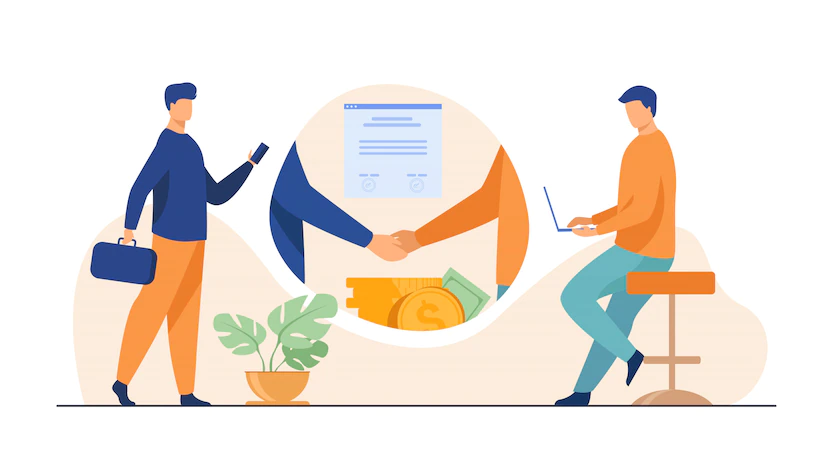Did you know that as of 2012, poor contract management cost companies up to 9% of their bottom line? This shows how crucial contracts are to the success of organizations. A Service Level Agreement (SLA) is a contract between a service provider and its clients, therefore, its importance cannot be underrated.
To know the value SLAs bring to your organization, it is essential to first understand what SLA is. In this article, you will learn what SLA is all about, how it differs from Service Level Commitment (SLC), the types of SLAs, SLA’s best practices, the key components and how SLA can bring value to your organization.

What is SLA?
The term ‘Service Level Agreement’ (SLA) refers to a legal agreement between a service provider and its clients that outlines the services they will deliver and the service standards they are required to uphold.
An SLA defines in clear terms the degree of service that a client expects from a service provider and the metrics that would be used to measure that performance. It also states any penalties that may be imposed if the agreed-upon service standards are not fulfilled.
In essence, a Service Level Agreement is made to bring two parties into alignment by defining clear expectations and preventing problems before they arise. SLAs can exist between two departments inside a firm, although they typically exist between businesses and outside contractors.
What is the difference between SLA and SLC
Apart from SLA, there is also SLC which stands for Service Level Commitment. The difference between SLA and SLC is that an SLA is comprehensive and generalized while the SLC is more specific. An SLA has two teams and is bidirectional while an SLC is a single-directional commitment that specifies what a team may always promise its clients.
Three types of SLAs
1. Customer service level agreement
The contract between a service provider and its external clients is called the customer Service Level Agreement. It can also be called an external service agreement. In a customer-based SLA, the services that will be offered are agreed upon between the customer and the service provider.
For instance, a business can negotiate with the telecommunications service provider in charge of running its telecommunications system to precisely describe their relationship and expectations.
2. Internal service level agreement
An internal SLA is between a company and its internal customers which could be another company, department, or site. For example, while a business may have customer SLAs with all of its clients, it may also have different internal SLAs between its sales and marketing divisions.
3. Multi-level service level agreement
When there are multiple end users or service providers, a Multi-level SLA explains what is expected of the various parties. This could be applied as a customer service strategy or as a component of an operational plan. The purpose of this sort of SLA is to specify what is expected of each side if there is more than one service provider.
Best practices for a service level agreement
It is essential to be familiar with the best practices for a Service Level Agreement if you want to use it successfully in your organization. Many organizations make costly mistakes due to not fully understanding the best practices of SLA. Taking time to study these SLA best practices will enable you to fully reap the benefits.
Key components of an SLA
- Overview of the agreement: SLA normally includes a description of the service, the recipients of the service, and the metrics to be used to determine the success of the service.
- Goals of the parties: In an external SLA between a company and a client, the goals specified in the contract are usually those of the client. Your business should add concrete objectives that it can regularly meet for its clients. If the SLA is internal, the objectives for each party should be clearly stated.
- Requirements for reaching set goals: The SLA should outline the requirements that each party to the agreement must meet to reach their objectives. This encompasses details like technical support, advice, or reporting. If you're creating an internal SLA, it should outline what the various departments need from one another to accomplish their objectives.
- Reporting process: The SLA should specify how problems should be reported, who should receive the reports, and how the process should work.
- Repercussions: The SLA must always define what will happen if the given goal is not achieved. Your business might, as an illustration, grant service credits or other types of remuneration in cases of unmet goals.
- Termination conditions: The SLA should provide legal conditions under which the parties may end the agreement and seek a better one. This might occur with an internal SLA, for instance, if you consistently fall short of your goals or if the SLA you created doesn't have the support you need from all stakeholders.
How SLAs bring value to your organization
1. They improve communication
It can be difficult to regularly communicate service requirements to clients. A well-designed SLA solves this problem. It helps to standardize communications with your clients or internal staff. With an SLA, everything is in ‘black and white’, and there is little room for ambiguity or miscommunication.
2. They help set clear and measurable guidelines
SLAs help to ensure that you and your clients are on the same page when it comes to standards and levels of service. When you create an SLA, you and your clients can collaborate effectively to better manage expectations, workloads and other important issues.
3. They establish smooth relationships with clients
Any business's internal and external relationships need to be managed carefully if it is to succeed in the long run. Service Level Agreements reduce the likelihood of misunderstandings or conflicts between service providers and clients. They promote client loyalty and retention.
A great way to build trust between service providers and clients is a Service Level Agreement. By creating a transparent contract that is accepted by both parties and can be easily referred to in case of disagreement, trust is built. SLA is a crucial first step in developing an open, beneficial, and long-lasting connection between service providers and clients.
4. They protect both parties
SLAs protect both parties as every term and condition is written. They establish the criteria for the service, making sure that the expectations of the service provider and the client are aligned. By defining clear and measurable goals and guidelines, the client knows what to expect. In addition, both parties are fully aware of their responsibilities and act accordingly.
5. The offer redress for expectations that aren't met
If a service provider doesn't fulfill its responsibilities to the client, and vice versa, the SLA specifies what will happen. Without the SLA, what will happen if one or both parties don't live up to expectations is unclear. A Service Level Agreement ensures openness regarding the goals for each service level and what will happen if they are not achieved. Little wonder 70-80% of business operations are governed by contracts.
6. They set the standard for customer service
SLAs hold both parties to high standards. Service Level Agreements let the customer know how the service provider is going to provide support and what the customer must do to receive the support. It confirms that the service provider is ready to be measured by the parameters laid down in the SLA.
7. They help to avoid conflicts
Whatever business you’re involved in, conflicts are bound to occur. How you handle the conflicts is what will determine how far your business will go. Service Level Agreements help to prevent and resolve conflicts. The nature of the written document makes it difficult for conflicts to happen since both parties agreed to the document before starting the contract. If disagreement wants to occur, the SLA will serve as a guide and reminder.
8. They improve productivity
Setting up Service Level Agreements gives your staff a sense of direction and focus. To meet clients' expectations, they can effortlessly plan their days, manage their assignments, and pace their work. This improves their efficiency and ultimately serves as a key to driving business growth and success.
Start adding value to your organization with SLAs
Service Level Agreements bring a lot of benefits to an organization if best practices are followed. Knowing the different types of SLAs, the global standards to be upheld, the key elements and the advantages organizations can get from using them gives your business an edge.
With proper implementation of Service Level Agreements, you will begin to see positive changes in the relationships with your clients and the productivity of your staff. A good reputation is also one of the upsides of well-executed SLAs.


